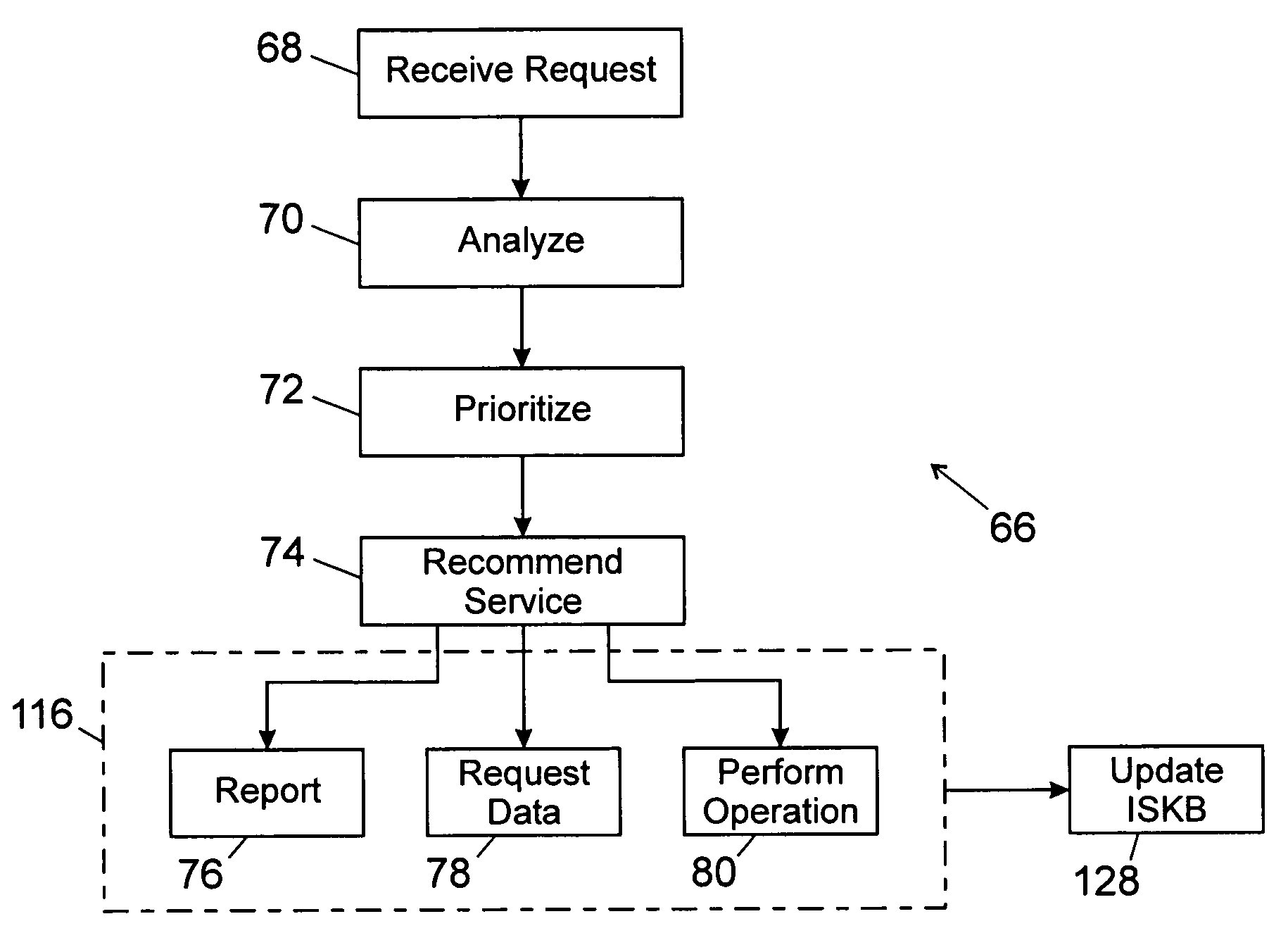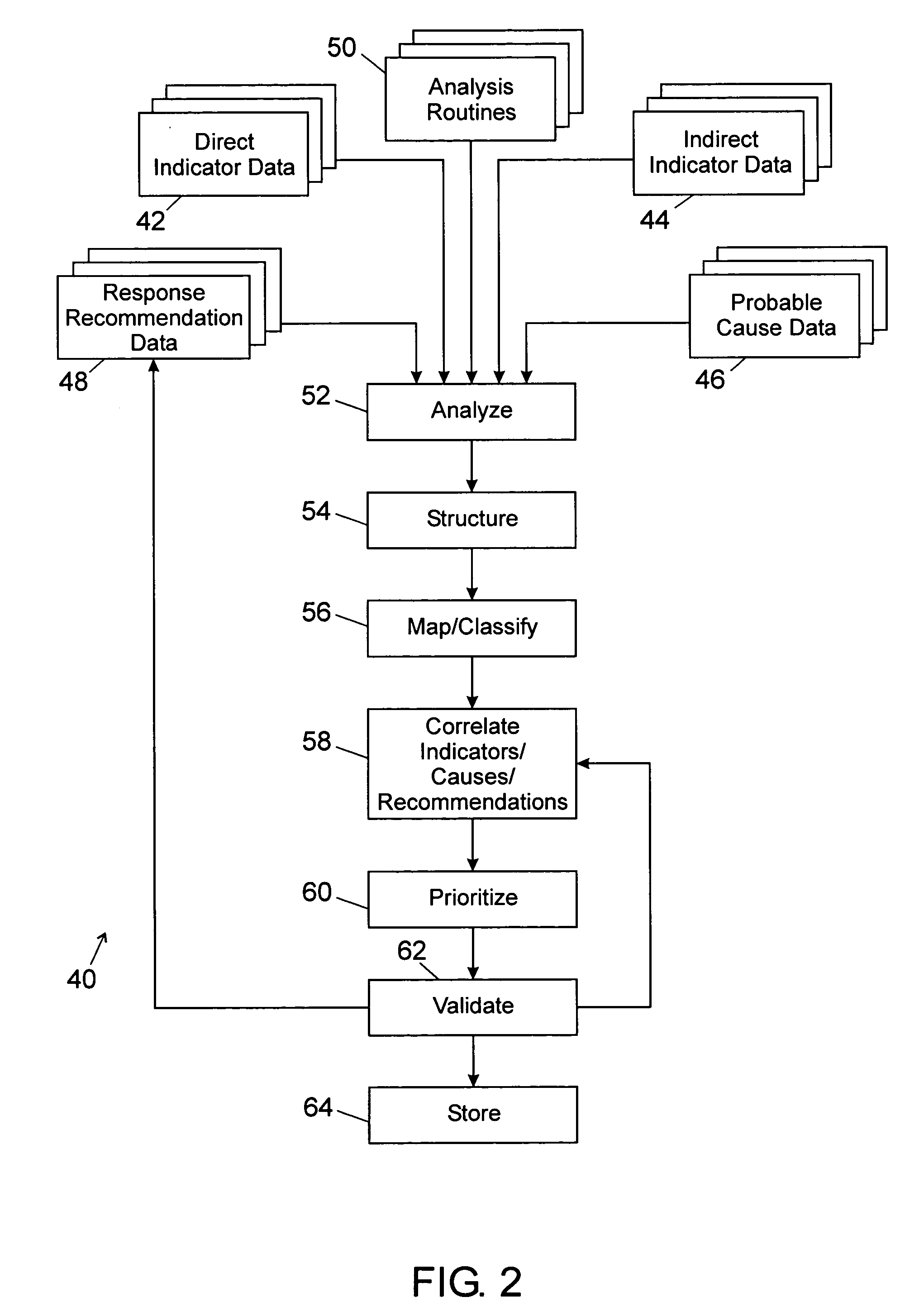Remote monitoring and diagnostics service prioritization method and system
a technology of remote monitoring and diagnostics, applied in the field of complex systems, can solve the problems of system inability to automatically handle service requests, service request and response prioritization is generally quite reactive, and the general limited extent of the system is not known
- Summary
- Abstract
- Description
- Claims
- Application Information
AI Technical Summary
Benefits of technology
Problems solved by technology
Method used
Image
Examples
Embodiment Construction
[0022] Turning now to the figures, and referring first to FIG. 1, a system 10 is illustrated diagrammatically for servicing complex systems, particularly through remote connectivity between the serviced systems and a service provider. As will be appreciated by those skilled in the art, such complex systems may be of a variety of types, and many such systems may be serviced by the present technique. In an exemplary implementation, for example, serviced systems might include medical diagnostic equipment which may be located in institutions, clinics, hospitals, and the like. Such equipment may be serviced remotely by providing connectivity directly to the system, or through an intermediary, such as a data management system in the institution or by an intermediate data exchange provider. The intermediate data exchange provider may, for example, store service requests, system data, messages, and so forth, and transmit this data to the service provider ultimately responsible for providing...
PUM
 Login to View More
Login to View More Abstract
Description
Claims
Application Information
 Login to View More
Login to View More - R&D
- Intellectual Property
- Life Sciences
- Materials
- Tech Scout
- Unparalleled Data Quality
- Higher Quality Content
- 60% Fewer Hallucinations
Browse by: Latest US Patents, China's latest patents, Technical Efficacy Thesaurus, Application Domain, Technology Topic, Popular Technical Reports.
© 2025 PatSnap. All rights reserved.Legal|Privacy policy|Modern Slavery Act Transparency Statement|Sitemap|About US| Contact US: help@patsnap.com



